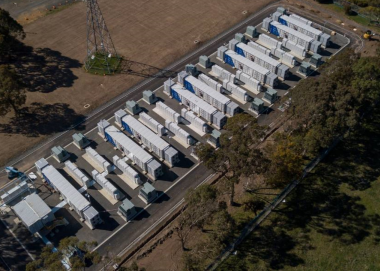The importance of electrical grid stability

Balancing the demand and supply of power
As the world becomes increasingly concerned about climate change, sustainability and decarbonisation, new phases in the power sector are revealing themselves. Often, grids have generated power from non-renewable energy sources, and because the power has been produced via centralised and scheduled systems, grid stability is relatively easy to achieve.
But things are changing with the advent of renewable energy sources such as sun and wind. Traditionally, EDBs and other power suppliers use synchronous generators to achieve stability, but electrical grids using energy sources have different requirements, particularly when it comes to smoothing out the intermittencies - and that's where the stability difficulties arise.
While the means of achieving stability when a grid is using renewable energy sources can be tricky, the actual solution isn't. Put simply, there has to be a balance between production and consumption on the grid; i.e., whatever energy is being generated needs to equal what's being consumed. So, you can see why some energy sources - wind, sun - might be deemed unreliable for conventional electrical grids. Grid stability is down to its response to the volatility in frequency and voltage interruptions and how well it maintains equilibrium.
So why move away from traditional electrical grids if they're more stable? Mostly because their energy sources - coal, gas - don't align with the 'green' goals that many countries are striving for. There's a push to harness renewable energy sources as much as possible, which means Kiwi EDBs and power companies simply have to innovate. The New Zealand government has a Net Zero goal of becoming 100% renewable by 2030, and that means harnessing the kind of technology that BES systems provide.
BES systemms can be rapidly and accurately deployed, increasing the power grid's efficiency and resiliency, regardless of the generation sources. They are cost-effective and easy to integrate on a distributed basis. It was with that in mind that we decided to delve deeper into the role that BES systems can play in electrical grid stability.
How BES systems help maintain electricity grid stability
This white paper details how utilisation of synthetic inertia enables BES systems to be dispatched for grid support. In it, we cover:
- The importance of grid stability - a stable electricity grid is one where equilibrium is maintained
- Renewable energy generation and its effect on grid stability - renewable energy sources are intermittent
- Grid codes - they're there to ensure a reliable and stable grid
- How BES systems can assist with grid stability - new elements and functionality to ensure a more reliable system as the grid loses inertia associated with traditional generation methods
- Static converters and synthetic inertia - how they ensure system stability and reliability
- Voltage Source Inverter (VISMA) - how this control helps the inverter to mimic the behaviour of a synchronous generator
- The effects of electrical and thermal limits on inverter performance
- Freemaq PCSK - Power Electronics’ inverter for BES solutions
What it comes down to is that BES systems offer Kiwi energy providers an opportunity to innovate and adapt. The reality is that not only must power companies become an active player in New Zealand's journey to Net Zero, but they can't really continue to rely so heavily on hydro lake storage. Equally, the stability of the electrical grid is also of paramount importance, meaning finding a solution to the stability issues raised by renewable energy sources. The time to innovate is now, and bringing a BES system on board to help maintain electricity grid stability is a tailor-made solution.
Keen to find out more about what BES systems can do to assure grid stability? Download the white paper today.

